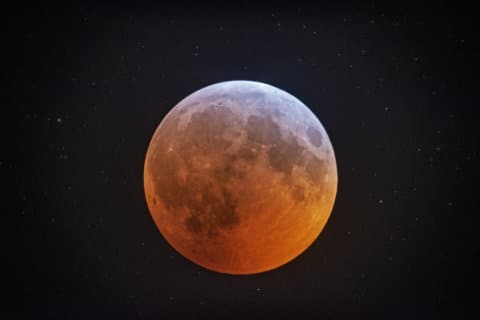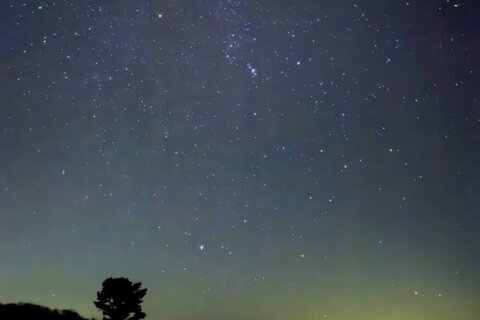UPDATE: Saturday, Jan. 10, 2015, 10 p.m.
Comet Lovejoy remains barely visible to the unaided eye and should remain as such as it heads to its closest approach to the Sun in a about two weeks. You can view finder charts and get more info on the comet here. The comet will be higher in the sky and well placed for early evening viewing.
This picture was taken with a Nikon DSLR through a 10-inch telescope in central Virginia. The gaseous envelope surrounding the solid core or nucleus of the comet is called the coma and is very bright with subtle details in the ion tail that can be seen at the 9 and 10 o’clock position.
I hope to get even better pictures as the comet climbs out of local light cones and into darker skies.
WASHINGTON — I know it is cold – hey, it is winter – but there are some sights to see in the night sky that are worth bundling up and getting out to see.
First up right after sunset is the pairing of bright Venus and Mercury in the southwest sky. Venus is easy to see when it starts to get dark and Mercury is just to the lower right. These two inner planets of our solar system have been getting closer to one another each night and they will be closest, less than the width of your little finger at arm’s length, on Saturday.
Use this to help find them. Binoculars are a big help and will show the color contrast between the two. To me Venus is a greenish-white, and Mercury is a yellowish-golden-white color. If you have never seen Mercury, most of humanity hasn’t, this is your chance to do so. It is an amazing little world that orbits closest to the sun and you can join an exclusive group that can say they have seen it.
You can also take a picture of the two using your camera. It is best to mount your camera on a tripod and use a remote shutter release to minimize vibrations. Take a variety of shots at different exposures.
Next up in the sky is Comet Lovejoy, which has been reported (including by me) to be at naked eye visibility at a dark sky site. The comet is getting higher in the sky each night and can be seen when it gets dark in the southeast sky. Once again binoculars will really help you finding this green-colored interloper into our solar system.
You want to look for Comet Lovejoy when the moon is not up in the sky. Use this to orient yourself with the sky and scan for Comet Lovejoy. You will also learn about why the comet is colored green and its history. What I found interesting is that this is not the first time Comet Lovejoy has been through our solar system.
If you live in a city, I would still try to see the comet but binoculars are a must as is having no glaring lights in your view. Suburbanites should have no problem spotting the comet with binoculars either. The comet will linger in our skies for the next several weeks.
I have taken time exposures of Comet Lovejoy and so can you. Mount your camera on a tripod and take time exposures of at least 10 to 20 seconds. Your picture should show the green color of the comet.
Finally, bright Jupiter is up in the eastern sky at about 9 p.m. and is easy to see. Binoculars can show the four main moons discovered by Galileo on Jan, 7, 1610 but a small telescope is best.
Here’s to clear skies, and let me know how your observing sessions went!
Follow my daily blog and Twitter @SkyGuyinVA to keep up with the latest news in astronomy and space exploration. You can email me at skyguyinva@gmail.com.







